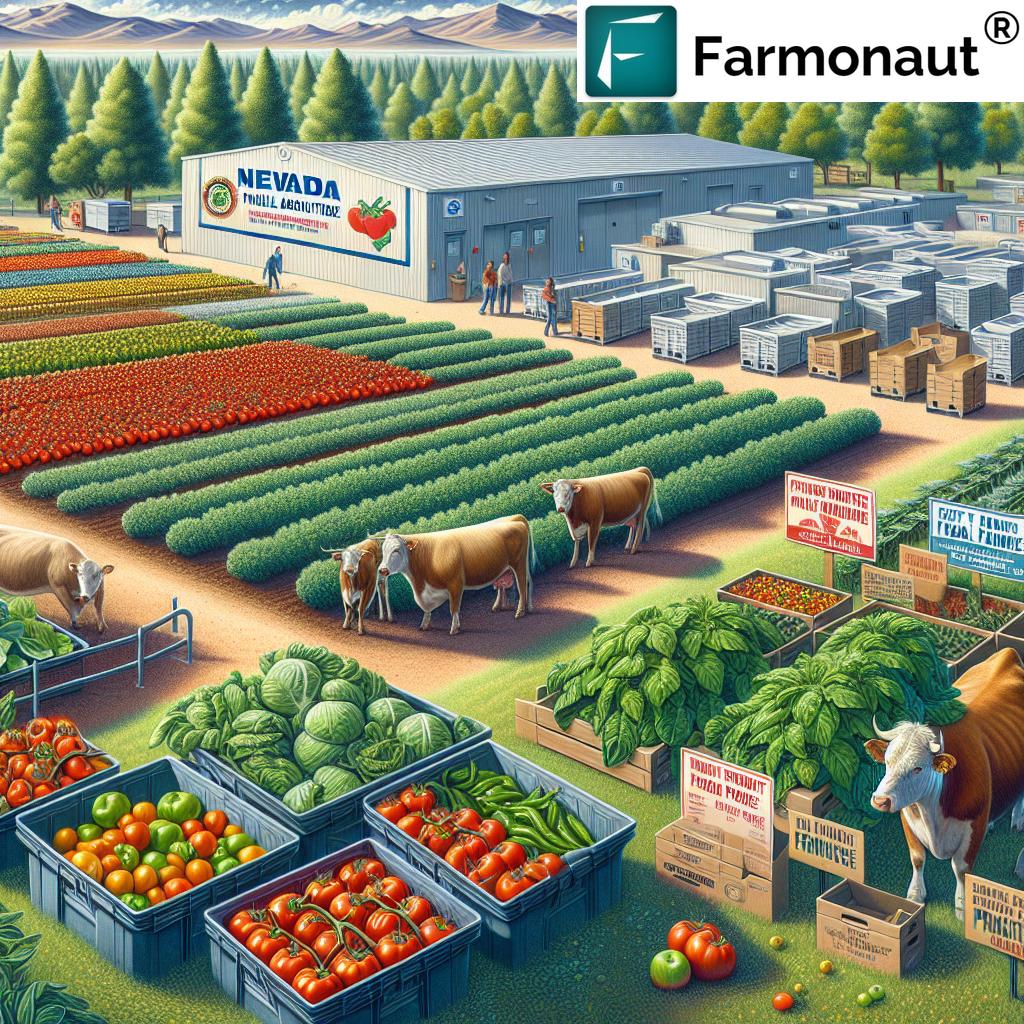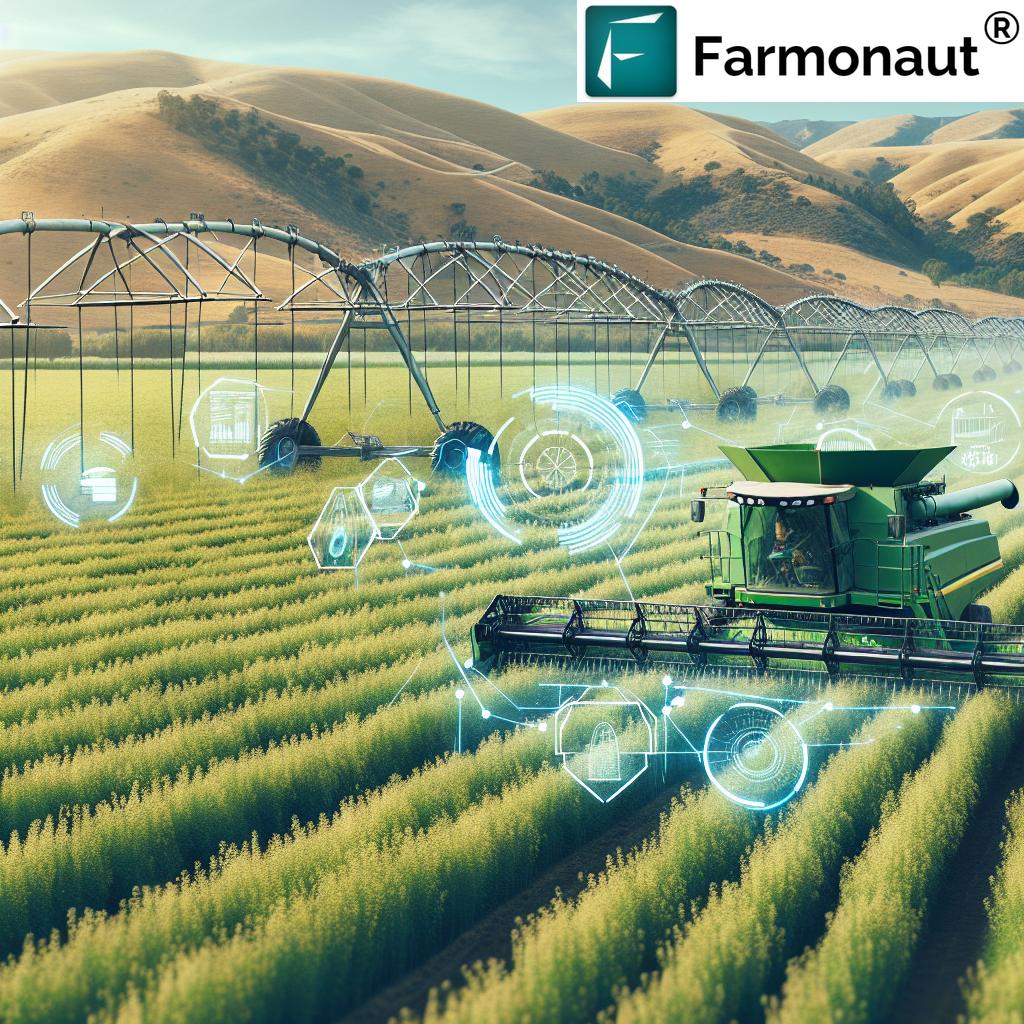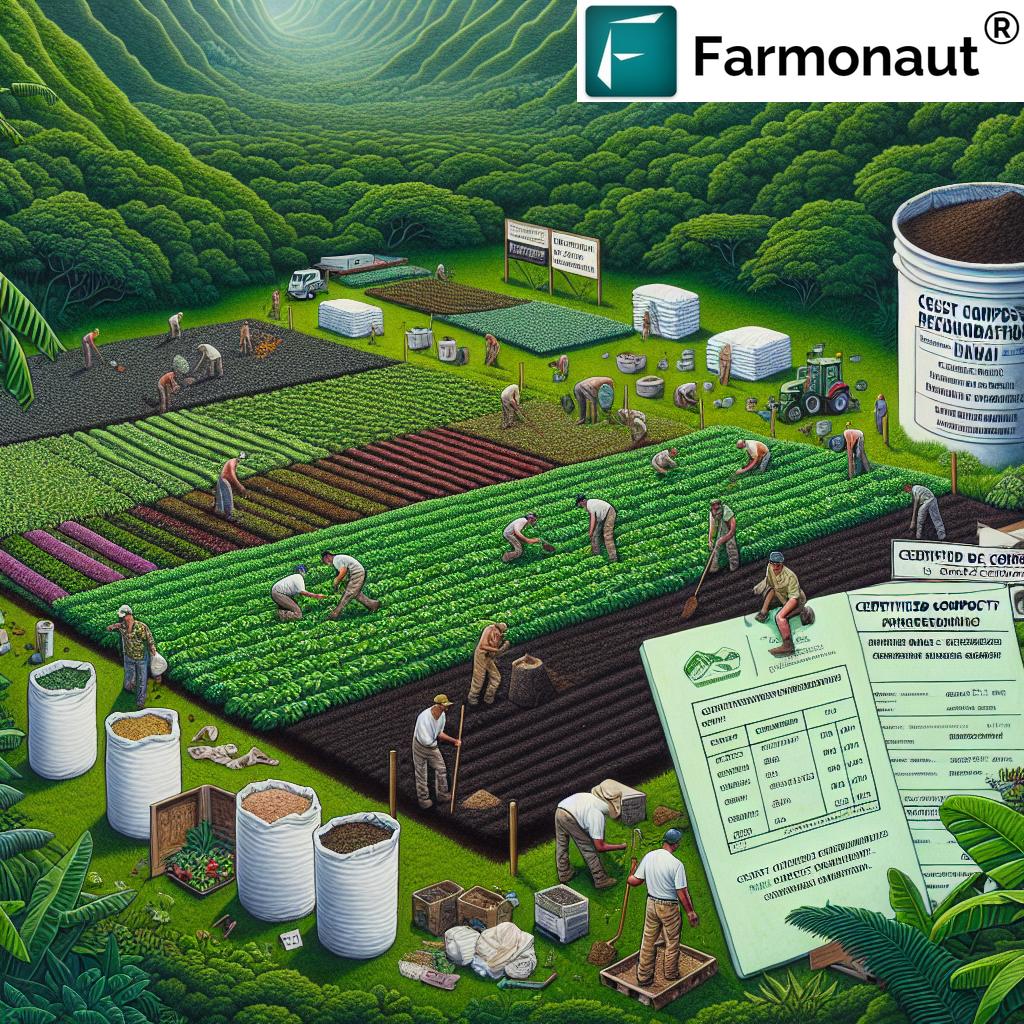Corn Seeders & Drill Seeder Machines for US Farmers
In 2025 and beyond, US agriculture is entering a bold era where innovation, data, and advanced corn seeders, farm seeder, and disc seeders for sale are revolutionizing how we plant and grow food. As modern farmers, staying updated on the latest seeder machine options—especially corn, disc, and drill seeders—is crucial for maximizing yields, optimizing resources, and ensuring sustainability. In this comprehensive guide, we delve deep into the evolving landscape of corn seeders, their technological features, market dynamics, and how new integrations such as Farmonaut’s satellite-driven solutions can support every stage of crop management.
The Evolution of Agricultural Seeding for US Farmers
The landscape of agriculture across the US continues to evolve rapidly. Farmers today must balance the push for increased crop productivity with the need for sustainable land use and environmental stewardship. As the demand for food continues to rise amid climate variability and market uncertainty, the role of technology in seeding becomes even more crucial.
Corn seeders, farm seeders, disc seeders for sale, and drill seeders for sale now play a pivotal role in enabling US corn farmers to optimize seeding, planting efficiency, and yield while maintaining soil health and reducing operational costs.
Corn Seeders: The Backbone of Mechanized Planting
In 2025, corn seeders remain the backbone of mechanized planting for US corn producers. These machines are precisely engineered to deposit seeds at a uniform depth and spacing, ensuring optimal germination conditions across the field.
- Uniform Seed Placement: Advanced control mechanisms ensure each corn seed is placed at a controlled depth for even emergence.
- Adjustable Row Spacing: With adjustable row units, farmers can optimize the space between rows for varying hybrid and regional needs.
- Smart Integration: Modern corn seeders now come with real-time monitoring systems, enabling the operator to adjust settings on the go.
- Reduced Seed Wastage: By precisely controlling seed flow, wastage is minimized and coverage is improved.
- Maximized Yield Potential: Better field coverage promotes optimal crop density—essential for maximizing yield in 2025 and the years to come.
For US farmers managing thousands of acres, these features are not just time-savers—they are essential productivity drivers.
Did you know? By aligning your seeding operations and input usage, you can now track and manage your farm’s carbon footprint for compliance and sustainability. See how Farmonaut’s carbon footprinting tools enable US farmers to measure, monitor, and improve their environmental impact efficiently.
Key Benefits of Advanced Corn Seeders
- High Planting Speed: Modern corn seeders can plant larger areas faster due to improved drive mechanisms and quick-refill seed hoppers.
- Automation Ready: Compatibility with GPS-based guidance systems allows for automated path following and minimal overlap or skips, further boosting efficiency.
- Sensing and Data Collection: Many seeders integrate with farm management software, storing data on seeding rate, depth, and even row-specific variations.
This collected data can then be analyzed later, offering insights to support fertilizer use, irrigation scheduling, and pest management all in one integrated system.
Farm Seeders: Multifunctionality & Adaptability in Modern Agriculture
Farm seeders encompass a broad range of equipment suitable for different crops, terrains, and conditions. As the **farm landscape continues to diversify** in the 2020s, farmers need equipment capable of handling various seed sizes and planting techniques:
- Multifunctionality: Most farm seeders are designed to switch easily between corn, soybeans, wheat, canola, and cover crops.
- Adaptability: Sophisticated technology allows each machine to adjust rapidly for different seed types and terrain, ensuring maximum coverage across contoured fields and variable soils.
- Site-Specific Sowing: Leveraging soil maps and productivity zones, farm seeders can tailor seeding rates to match soil fertility and moisture conditions.
**Compatibility with remote guidance systems** makes farm seeder operations less labor-intensive and ensures accuracy, even over large, irregular fields.
For those managing sizeable operations, we recommend exploring large-scale farm management platforms that unify crop performance analytics, seeding data, and operational logistics for streamlined efficiency.
Why Multifunctionality Matters for Today’s US Farmers
- Supports diverse crop rotation and mixed farming systems—now common strategies to maintain soil health and prevent pest buildup.
- Reduces downtime and costs by eliminating the need for multiple machines for different crops or tasks.
- Improves ROI by maximizing the utilization rates of expensive farm equipment.
Disc Seeders for Sale: Conservation, Versatility & Soil Health
Disc seeders (or disc drills), known for their versatility and minimal soil disturbance, have gained renewed attention with the rise of conservation agriculture across the US.
Key characteristics of modern disc seeders for sale:
- Low-Till Mechanism: Rotating discs slice the soil and deposit seeds beneath the surface without flipping or extensively turning the earth.
- Preserves Soil Moisture: By leaving crop residue on the surface, soil moisture is conserved and evaporation is reduced.
- Reduces Erosion: Maintaining stubble and pulling less earth preserves soil structure and prevents erosion—especially vital in the variable climates expected through 2026 and beyond.
- Accelerated Residue Breakdown: Intact residue remains in contact with soil microbes, quickening organic matter cycles crucial for soil health and long-term fertility.
- Compatibility: Many disc seeders for sale now offer compatibility with advanced guidance and data integration systems to track row data, overlaps, and skips.
With the growing US demand for sustainable farming systems, disc seeders are an efficient, environmental solution for both large and small agricultural operations. Many US corn farmers now rely on disc drills to balance productivity while combating soil loss and environmental degradation.
Drill Seeders for Sale: Precision, Control, and Sustainable Farming
Drill seeders are especially indispensable for sowing smaller seeds like cover crops, forages, and fine grains, as well as for precision corn seeding. In 2025, the best drill seeders for sale are designed to offer:
- Consistent Row Spacing and Depth: With precisely engineered row openers, seeds are placed in well-defined, evenly spaced rows.
- Variable Rate Seeding: Modern drill seeders can vary seeding density based on mapped soil fertility or moisture data—ensuring site-specific planting that matches the inherent productivity of each field zone.
- Real-Time Monitoring: Onboard sensors let operators monitor seed placement, hopper quantity, and machine health in real time.
- Minimal Soil Disturbance: Like disc models, drill seeders can maintain soil structure while ensuring optimal seed-to-soil contact for quick germination.
With their precision and control, drill seeders are critical for sustainable agriculture—enabling practices like interseeding cover crops for erosion control, organic matter improvement, and even weed suppression. These systems reduce input waste, support soil health, and ensure consistent crop emergence across thousands of US acres.
Traceability on Your Farm, Made Easy: Track every stage from sowing to harvest. Learn how Farmonaut’s blockchain product traceability solutions can enhance transparency for crops planted using advanced seeders, ensuring trust and food safety from your field to the marketplace.
Smart Seeding: Watch Modern Machinery in Action
See how the latest drill seeders for sale and disc seeders for sale combine smart telemetry, AI-based adjustments, and precision parts to maximize both planting efficiency and yield across diversified systems and soil types.
Looking to ensure your agricultural fleet—including seeders—is operating at peak efficiency? Discover Farmonaut’s fleet & resource management tools, designed to optimize equipment logistics, reduce costs, and improve machine uptime for large or multisite farms across the US.
Advanced Features in Today’s Seeder Machines: Smart Tech, IoT & Data Integration
In 2025 and moving into 2026, the next generation of corn seeders, farm seeders, disc seeders for sale, and drill seeders for sale goes well beyond mere mechanical innovation, integrating digital technology, remote monitoring, and artificial intelligence. Here’s what’s trending:
- GPS and RTK Guidance: Precise row alignment with sub-inch accuracy, reducing overlap and gaps—cutting waste and saving time.
- Variable Rate Seeding (VRS): Adjusts seed rates in real time, matching on-the-go soil fertility or yield potential data.
- Telematics and IoT Sensors: Collects machine performance, placement, and environmental data—feeding directly into advanced farm management apps for actionable insights (see Farmonaut app links above for seamless integration).
- Section Control: Automatically turns off seeder sections when overlapping with previously planted areas, reducing duplication and input waste.
- Predictive Maintenance: Sensor-driven warnings for wear parts and consumables prevent costly downtime and unplanned repairs.
- Remote Adjustments: Operators can adjust row settings, seeding rates, and even maintenance intervals from their cab or via remote app.
This intersection of precision machinery and data-driven agriculture is reshaping how US corn farmers plan, execute, and analyze planting operations.
Many US farmers now leverage satellite-driven verification and crop insurance systems by integrating seeding data with remote sensing for transparent lending and insurance practices.
Feature Comparison Table: Corn Seeders, Farm Seeder, Disc & Drill Seeders
Choosing the right seeder machine directly impacts planting efficiency, field coverage, and yield. Below is an up-to-date comparison of typical advanced seeder categories relevant to US corn farmers:
| Seeder Type/Model | Approx. Row Capacity | Estimated Planting Speed (acres/hour) | Precision Level (% seed placement accuracy) |
Hopper Capacity (bushels) |
Suitable Farm Size (acres) | Estimated Price Range (USD) | Unique Technological Features |
|---|---|---|---|---|---|---|---|
| Advanced Corn Seeder | 12–48 | 12–40 | 98–99 | 60–120 | 500–15,000+ | $80,000–$300,000 | GPS, VRS, RTK, section control, telematics, real-time depth monitoring |
| Precision Disc Seeder | 8–32 | 10–34 | 97–98 | 50–100 | 250–10,000 | $50,000–$200,000 | Low-till discs, auto-adjust row units, residue handling, IoT integration |
| Conventional Drill Seeder | 8–24 | 7–24 | 96–97 | 40–80 | 100–7,000 | $20,000–$125,000 | Adjustable spacing, variable-rate, depth control, real-time monitoring |
| Multifunction Farm Seeder | 10–50 | 10–38 | 97–99 | 60–130 | 300–14,000 | $65,000–$250,000 | Multi-crop, fast conversion, remote control, GPS pathing |
Seeder Machine Market Trends & Future for US Corn Farmers (2026+)
The market for seeder machines in the US is expected to grow annually through 2026 and beyond, fueled by both economic necessity and new environmental regulations.
Manufacturers focus on:
- Durability and Ease of Maintenance: Robust machines with minimal electronics in wear-prone areas reduce lifecycle costs and downtime.
- Advanced Digital Integration: Offering seamless interfaces for direct data integration with farm management software, facilitating deeper analysis and reporting.
- Sustainable Design: More emphasis on materials, energy efficiency, and soil-friendly seeding approaches to comply with growing carbon footprinting requirements.
For US corn farmers experimenting with more complex rotations or diversified farm models, the need for multifunctional, precise, and environmentally responsible equipment will only increase. Many now use cover crops and minimal tillage, requiring both disc seeders for sale and versatile multifunctional drill seeders that fit into evolving systems.
Farmonaut Satellite Technology: Integration with Modern Seeder Machines
While Farmonaut does not manufacture or sell farm equipment, our mission is to make advanced satellite-driven insights accessible and actionable for everyone—from small family operations to large agribusinesses. Our web and mobile platforms allow farmers to leverage real-time satellite data on soil moisture, crop health (NDVI), and weather—enabling more precise decisions both before and after seeding.
- Soil Condition Monitoring: Before running your seeder, satellite images help map out areas of high compaction, excess moisture, or nutrient need.
- Plant Emergence Analysis: After planting, our platform lets you track and compare emergence patterns field-wide, quickly spotting gaps, skips, or problem areas.
- Resource Optimization: Using Jeevn AI, receive advisory suggestions on what fields to prioritize for variable-rate planting or input application, boosting efficiency and yield.
- Sustainable Operations: Generate environmental impact reports, calculate your field’s carbon footprint, and support compliance needs right from your phone or browser.
- API and Developer Access: For businesses, our API and detailed API documentation enable seamless integration of seeding, placement, and field analytics into custom digital solutions for smarter farms.
By integrating advanced seeder technology with Farmonaut’s real-time agronomic monitoring, you are able to maximize profitability and support long-term soil health, crop resilience, and operational efficiency.
For those managing plantation forestry or specialty crop advisory at scale, check our crop, plantation, and forest advisory toolkit designed for actionable insights tailored to your specific seeder-driven operations.
Best Practices: Selecting and Using Corn Seeders & Drill Seeder Machines
Making the most of corn seeders, farm seeders, disc seeders for sale, and drill seeders for sale requires a strategic approach tailored to the specific needs, size, and environmental conditions of your US operation.
Key Considerations Before Investing in a Seeder Machine:
- Farm Size & Terrain: Larger acreage benefits from high-capacity, high-speed seeders with wide working widths. Rolling or variable fields require machines with effective ground-following and depth control.
- Crop Types & Rotation: Farms with diverse or intensive rotations need multifunction seeders capable of handling variable seeds (from corn to cereals and cover crops).
- Soil Conditions: Low-till disc or drill seeders are preferred for preserving soil structure and combating erosion, while more aggressive openers may be necessary for compacted or heavy soils.
- Technology Needs: Consider options with guidance compatibility, variable rate control, and comprehensive telemetry for better management analytics.
- Maintenance & Support: Prioritize durable models with accessible service points and strong local dealer support—for minimized downtime during critical planting windows.
- Environmental Goals: Seek equipment that not only improves yield but also *maintains soil health, supports cover cropping*, and aligns with new market standards for sustainability.
During Planting: Maximizing Efficiency & Yield
- Always calibrate your seeder for seed size, weight, and lot—to avoid skips/doubles.
- Monitor real-time seed placement and depth (use digital displays or remote monitoring where available).
- Catch and address machine maintenance needs immediately; use telematics for predictive alerts.
- Log all seeding data on digital platforms for post-planting analyis and regulatory reporting—Farmonaut’s app can help.
After Seeding: Leveraging Data for Sustainable Success
- Use NDVI and emergence maps to identify thin spots, skips, or compaction issues.
- Pair emergence and growth data with soil moisture and rainfall updates for optimal irrigation planning.
- Monitor for early pest/disease pressure in conjunction with satellite-advised scouting recommendations.
FAQ about Corn Seeders & Drill Seeder Machines
-
What are the main differences between corn seeders, disc seeders, and drill seeders?
Corn seeders are designed specifically for uniform, row-by-row corn planting at controlled depth and spacing. Disc seeders use rotating discs to cut minimal furrows with very low soil disturbance, ideal for conservation agriculture and moist soils. Drill seeders are suited for smaller seeds (including cover crops and grains), placing them in predefined rows with precision depth control.
-
Why is variable rate seeding (VRS) important in 2025 and beyond?
VRS enables growers to adjust seed rates on-the-fly based on soil fertility, moisture, and yield potential—optimizing input use, enhancing yield in strong zones, and reducing seed waste in less-productive areas.
-
How do smart seeders reduce operational costs?
Smart seeders automate overlap reduction, adjust placement for soil and field variability, minimize input waste, and provide telematics data for predictive maintenance—leading to fewer breakdowns and better labor use.
-
Are modern seeders compatible with satellite agronomic monitoring systems?
Most advanced seeder machines are compatible with external field analytics, allowing seamless integration of planting data with satellite-based tools (such as those provided by Farmonaut) for deeper crop management insight.
-
Where can I find more detailed technical specs and current prices for seeders in my region?
Reach out to your regional equipment dealer network, and consult crop-specific extension bulletins. For real-time resource management, operational analytics, and integration tips, download the latest Farmonaut app.
-
How do I use satellite data for better seeding outcomes?
By monitoring pre-plant soil conditions, mapping post-plant emergence with NDVI or other indexes, and integrating Farmonaut’s advisory, you can make objective, data-driven equipment adjustments at every growth stage.
Conclusion: Shaping the Future of US Corn Farming with Advanced Seeder Machines
The rapid evolution of modern corn seeders, farm seeders, disc seeders for sale, and drill seeders for sale redefines how US corn farmers approach planting and sustainability. Advanced seeder machines, when integrated with real-time data and decision-support tools, are not just workplace tools but strategic assets—maximizing efficiency, ensuring yield resilience, and safeguarding long-term soil and environmental health.
Looking ahead to 2026 and beyond, the convergence of precision machinery, satellite data integration, and smart planting technology promises an era of greater autonomy, transparency, and profitability. As the market continues to expand and technology advances, US farmers who adopt these innovations will be best positioned to meet the growing demand for food while supporting the planet’s natural resources.
Whether you grow corn in the Midwest, grains across the Plains, or manage multi-crop rotations, the right seeder machine—chosen using the insights and best practices in this guide—will be the cornerstone of future-ready, sustainable agriculture.
Farmonaut Subscription Options
Explore affordable, scalable options for integrating satellite-driven precision agriculture tools on your farm. Boost efficiency, monitor crop health, and track seeder outcomes all season:
References & Further Reading
- Farmonaut Web & Mobile Apps: Real-time satellite insights for planting and crop management.
- Fleet Management Tools: Track and optimize your entire machinery fleet.
- Large-Scale Farm Management Platform: For integrated seeding, crop, and operational analytics at scale.
- Traceability Solutions: Blockchain-backed supply chain transparency from seeding to market.
- Crop Loan & Insurance Verification: Satellite-verified, transparent agricultural financing.
- Carbon Footprinting Platform: Track and reduce the environmental impact of farm operations.
- Farmonaut API: Connect your digital farm systems with powerful satellite-driven data streams.
- API Developer Docs: Full technical documentation for customizing your solutions.














